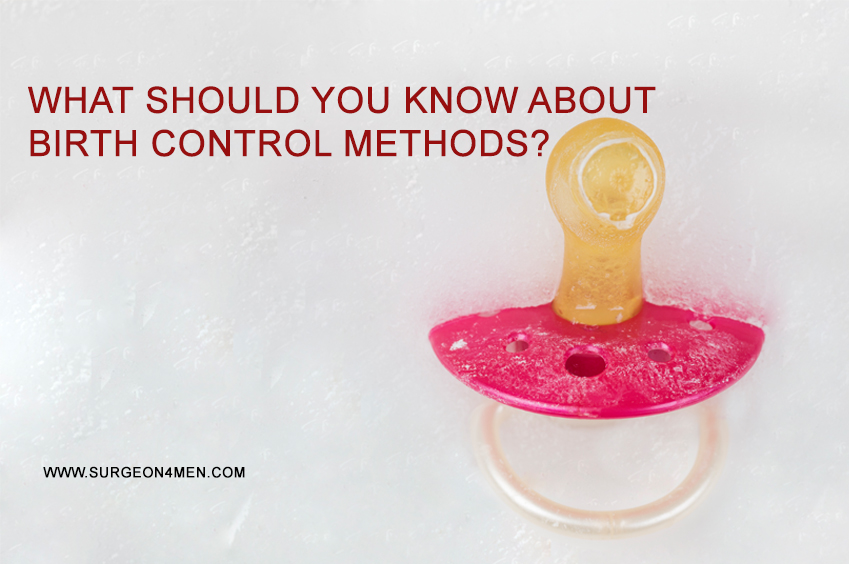What Should You Know About Birth Control Methods?
Are you aware that the rate of unplanned pregnancy in the United States is as high as 49%? (1). According to the latest data reported by Centers for Disease Control and Prevention, investigators reported that 4 of every 5 pregnancies in women (who are 19 years or younger) are unintended (1). This also means that this population can greatly benefit from dependable and effective birth control methods.
Unfortunately, a lot of women are skeptical about the use of birth control methods; here is why:
- It is a common misconception that all birth control methods affect fertility and overall physical health in the long term.
- The cost of each method is sometimes so high that most people prefer to use less safe and practical methods (such as abstinence or withdrawal method).
In addition, there is a significant chunk of population who does not know a lot about the birth control methods.
Are All Birth Control Methods 100% Preventive Against Unplanned Pregnancy?
Patient education is the key when it comes to birth control methods. It is important to understand that birth control pills, vaginal ring insertion and skin patches, all are short term birth control methods that may result in unwanted or unplanned pregnancy because of varying degrees of effectiveness. For example, use of diaphragm can only prevent an unwanted pregnancy in 84% cases. In other words, even if you follow all the instructions adequately, 16% users still becomes pregnant. Likewise, the effectiveness of other birth control methods is also less than 100%; such that oral contraceptive pills (92%), spermicidal jellies (72%), male condom (82%), IUD devices (99%), Patch (91%) and female condom (79%).
According to recent studies, methods which requires monitoring on daily or monthly basis are not reliable in preventing unintended pregnancies. It was also suggested that such women are 20 times more likely to become pregnant compared with those who use long term methods such as intradermal implants on upper arm or intrauterine devices (IUD).
Unintended Pregnancies In United States
Among developed countries, United States has the highest rate of unplanned or unwanted pregnancies i.e. 6 million per year. It has been observed that nearly half of the unintended pregnancies are due to improper and irregular use of birth control method. In United States, birth control pills is still the most commonly used contraceptive method while in countries like United Kingdom and France use of intrauterine devices are quite high, yet another reason for US having highest number of unplanned pregnancies.
A recent study was conducted on 7500 women to compare the results of different contraceptive methods. Women aged from 14 to 45 and were given a choice to pick their preferred contraceptive as part of the study. At the time of analysis, it was observed that about 1500 women chose short term methods for birth control while 5800 went for implants or IUD and remaining opt for depot medroxyprogesterone acetate (DMPA) injections. Around 334 unplanned pregnancies were observed during the study, among which the highest rate of failure (i.e. 4.5%) was observed in women who selected birth control pills, rings or patches. The lowest failure rate was reported in women who used DMPA injections.
Besides type of contraceptive method used, age of women also matters. The study indicated that females who were below 21 and used pills/rings/patches were two times more likely to get unintentionally pregnant as compared to older women using same methods because younger females tend to forget their pills or change the rings/patches. Whereas, IUD remains in uterus for 5 to 10 years while implants are effective for up to 3 years. Thus these methods are more convenient to use.
In conclusion,
About 5.5% American women are using IUD for birth control, many women are not even aware of these long term methods or they feel uncomfortable at inserting devices inside their uterus or beneath skin. Although, IUDs are associated with the risk of developing infection in the uterus and implants can cause unexpected bleeding but chances of complications is generally rare. The benefit ratio is much higher than risk therefore, women must opt for the most reliable and efficient long term birth control methods.
References
1. https://www.cdc.gov/reproductivehealth/unintendedpregnancy/
2. Finer, L. B., Jerman, J., & Kavanaugh, M. L. (2012). Changes in use of long-acting contraceptive methods in the United States, 2007–2009. Fertility and sterility, 98(4), 893-897.
3. Halpern, V., Lopez, L. M., Grimes, D. A., Stockton, L. L., & Gallo, M. F. (2013). Strategies to improve adherence and acceptability of hormonal methods of contraception. The Cochrane Library.
4. Trussell, J., Henry, N., Hassan, F., Prezioso, A., Law, A., & Filonenko, A. (2013). Burden of unintended pregnancy in the United States: potential savings with increased use of long-acting reversible contraception. Contraception, 87(2), 154-161.
